We spent most of this week conducting RF calibration and collecting EVM measurements.
The output coming out is a 10MHz occupied bandwidth QPSK signal passed through a root raised cosine filter at 4.8MSPS and a 28MHz reconstruction filter.
The LOs were specifically chosen to be multiples of 38.4MHz (which is the fundamental frequency of the on-board VCTCXO) so that we could test the signal and identify any clock spurs. Fortunately, there don’t appear to be any spurs.
We have gathered enough data and experimented enough to figure out how to best calibrate these devices. Although the current EVM is very good, there still exist many other low hanging fruit that should let us push the EVM even lower.
LO at 384MHz
LO at 576MHz
LO at 768MHz
LO at 1152MHz

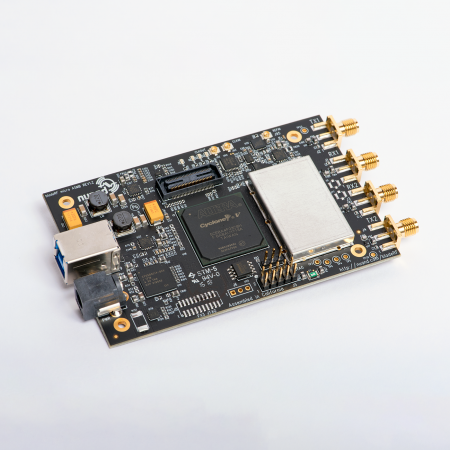


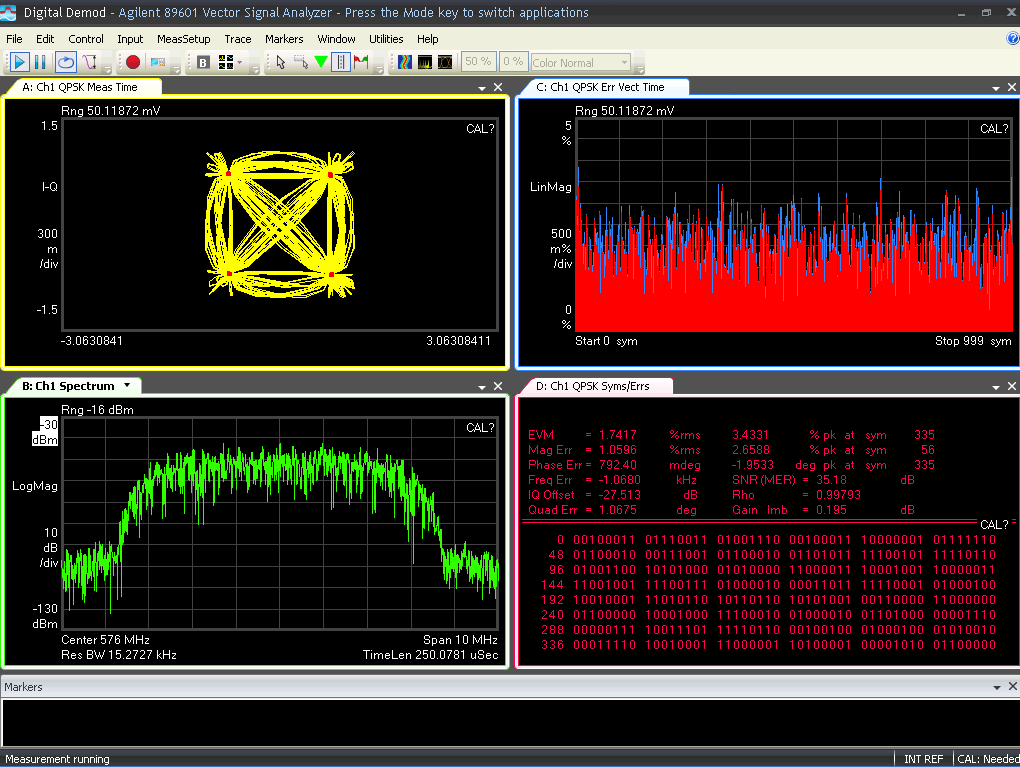
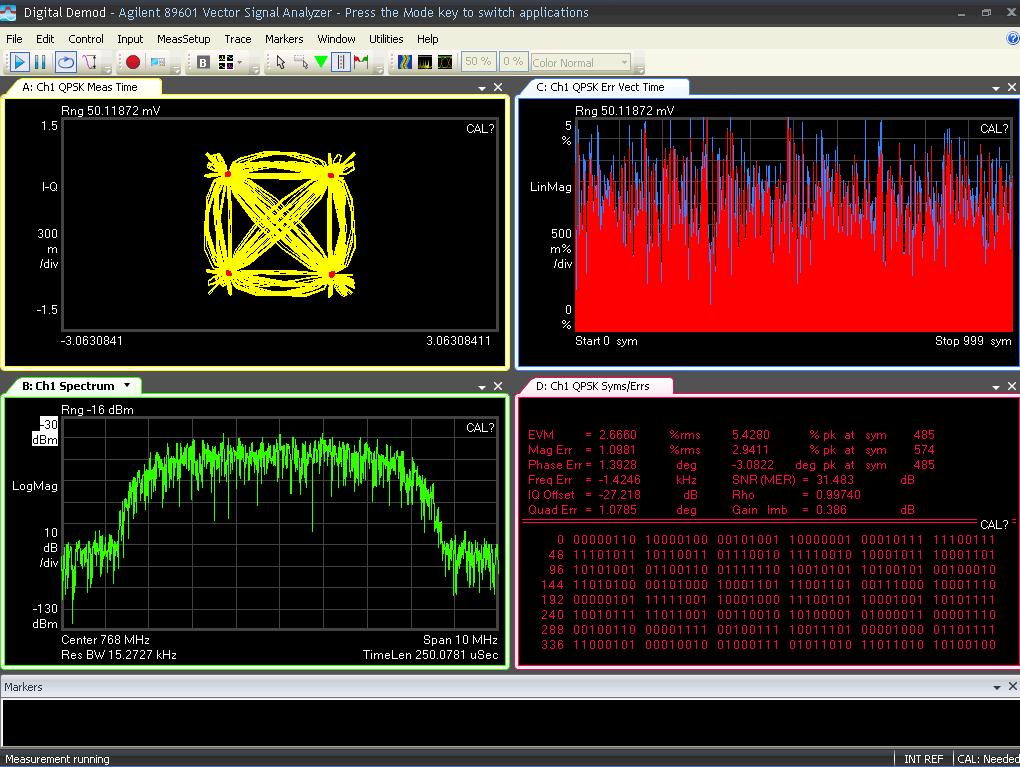
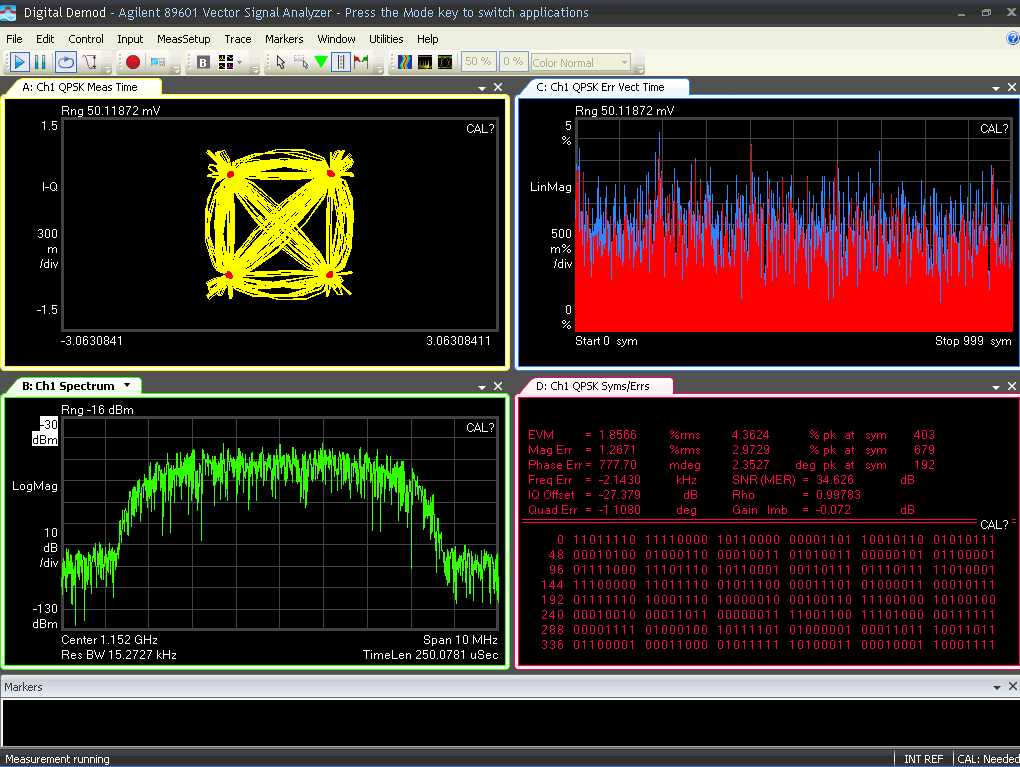
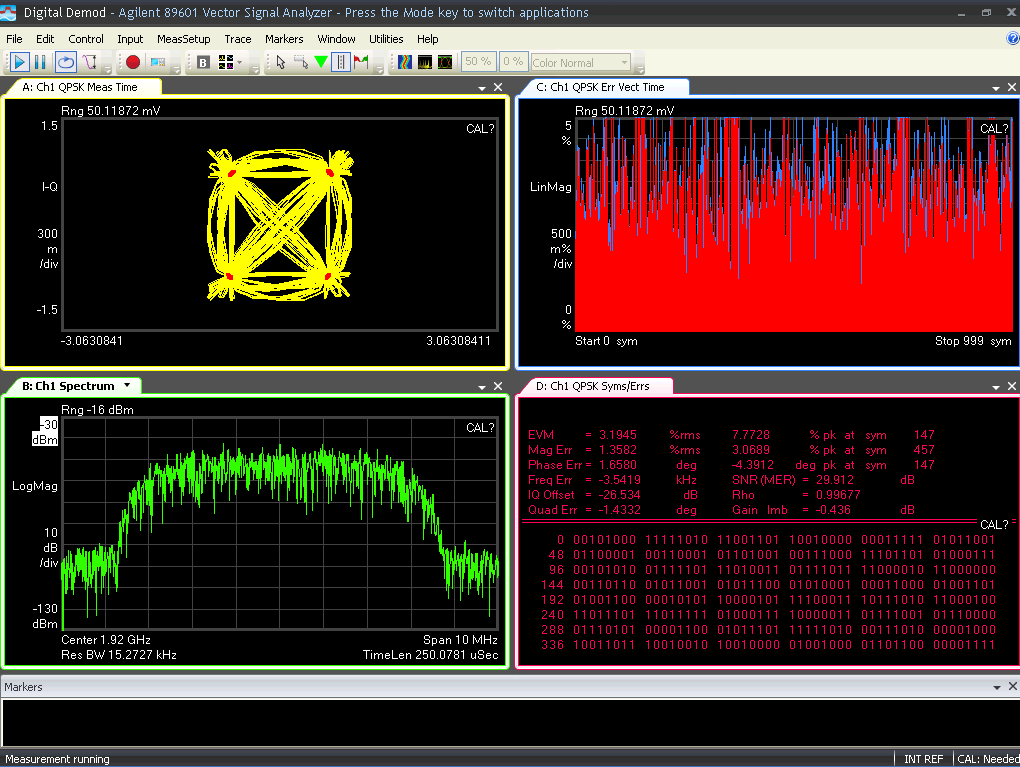
Looks like your frequency error is around 1.8 ppm, which a little high but still in spec for your vctxco. Can you grab another screencap at 1920 MHz, but after using the DAC161 to tune the TXCO to be on freq? One of the TCXOs I dealt with in the past had the nasty habit of having significantly higher than expected phase noise once it’s frequency error was corrected via the tune line. It was nice when the tune line was centered at half the rail, but fell apart when tuned past +/- 2 ppm even though the tune range was specced for a minimum of +/- 5 ppm.
A screencap in the 3.24-3.72 GHz range (the top undivided VCO freq range) would also be informative.
Also, can you do a Utilities->Single Cal before taking the measurement to get rid of the Cal warning.
Thanks
~pk